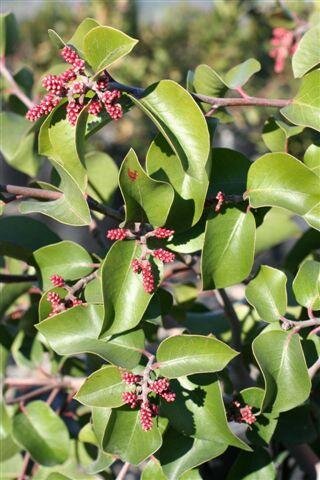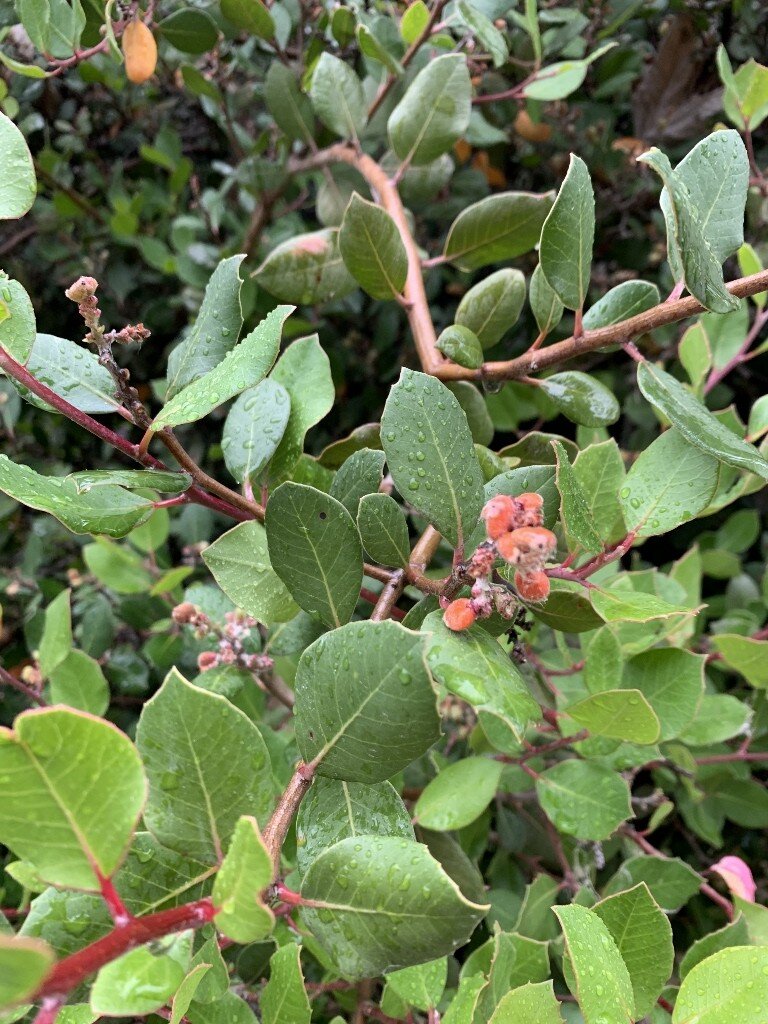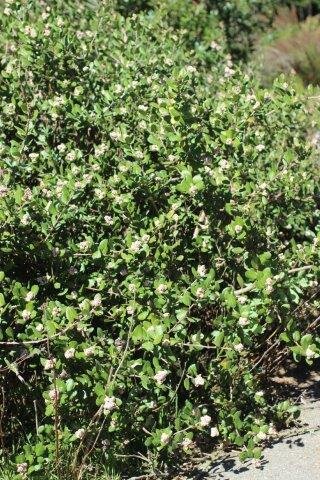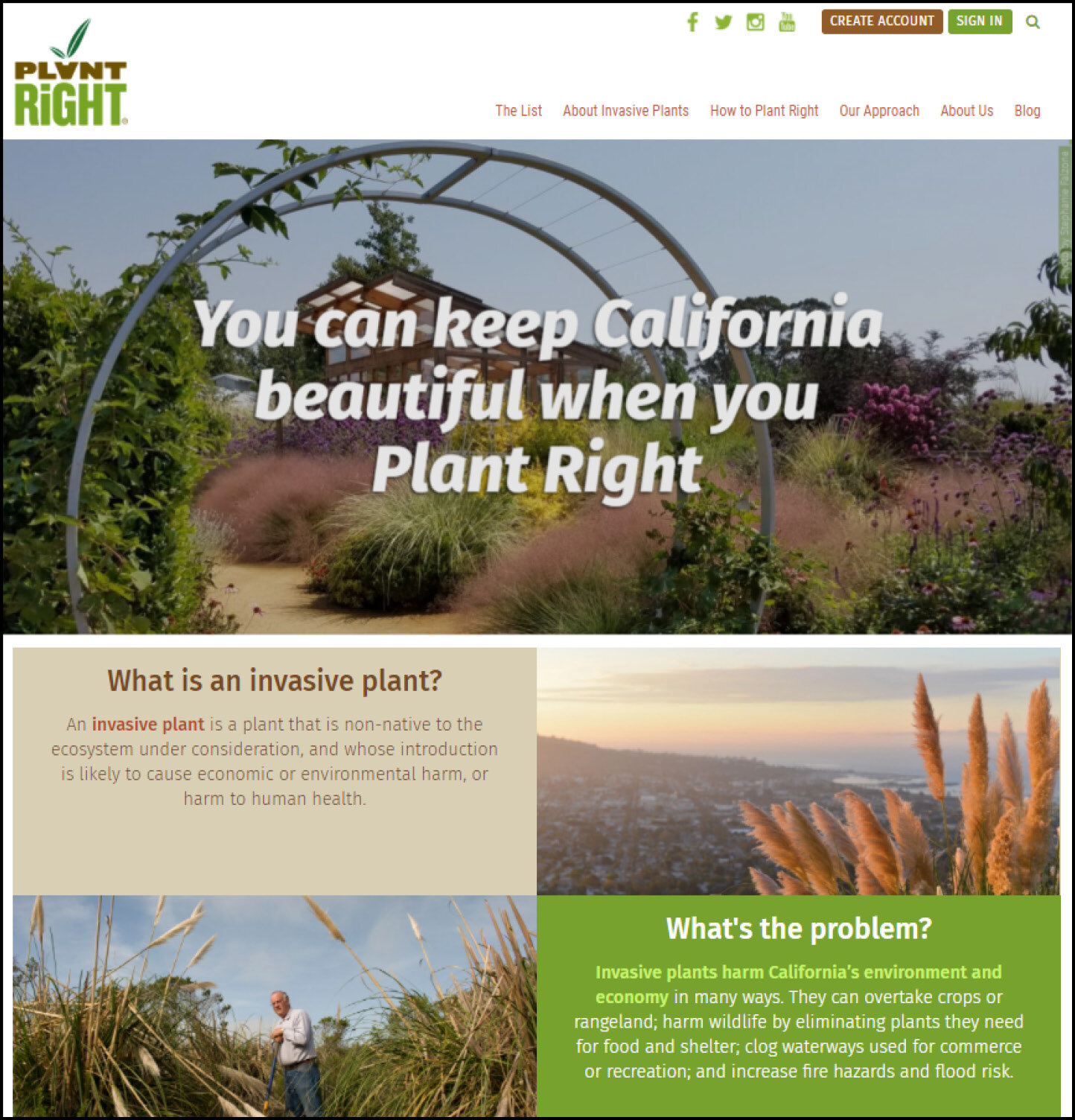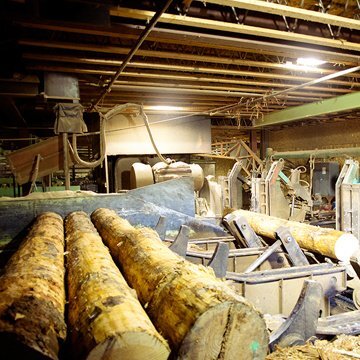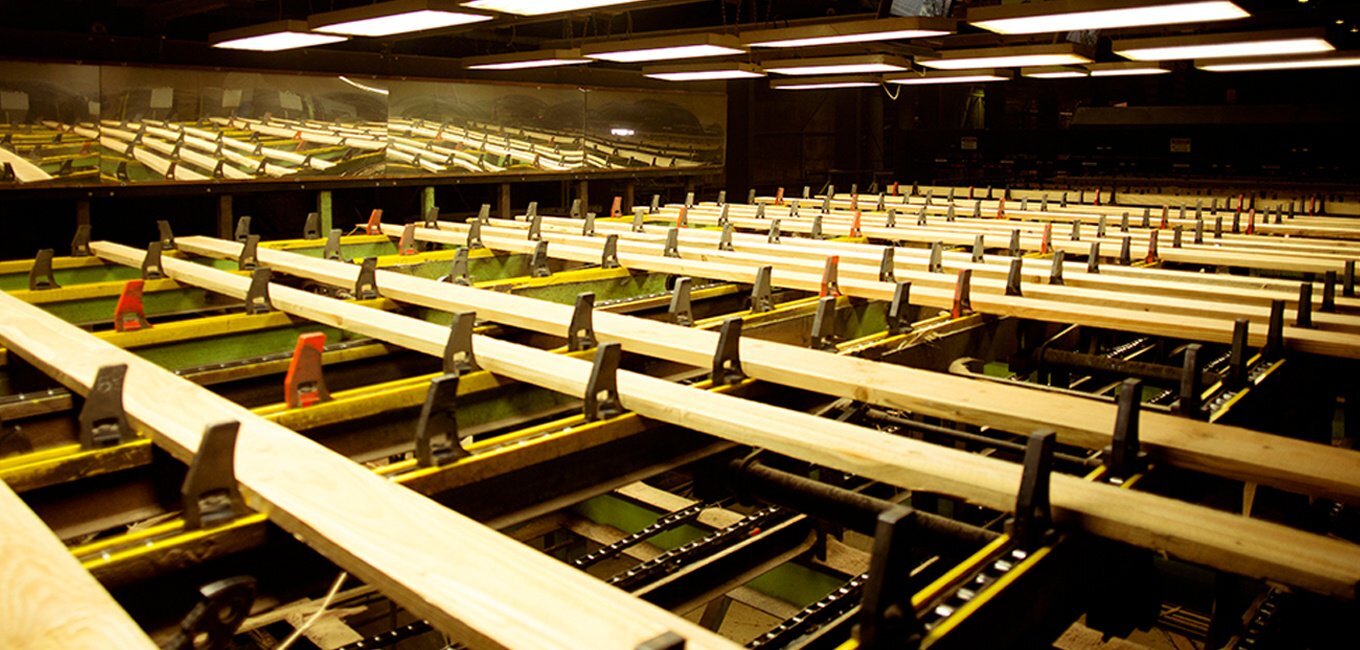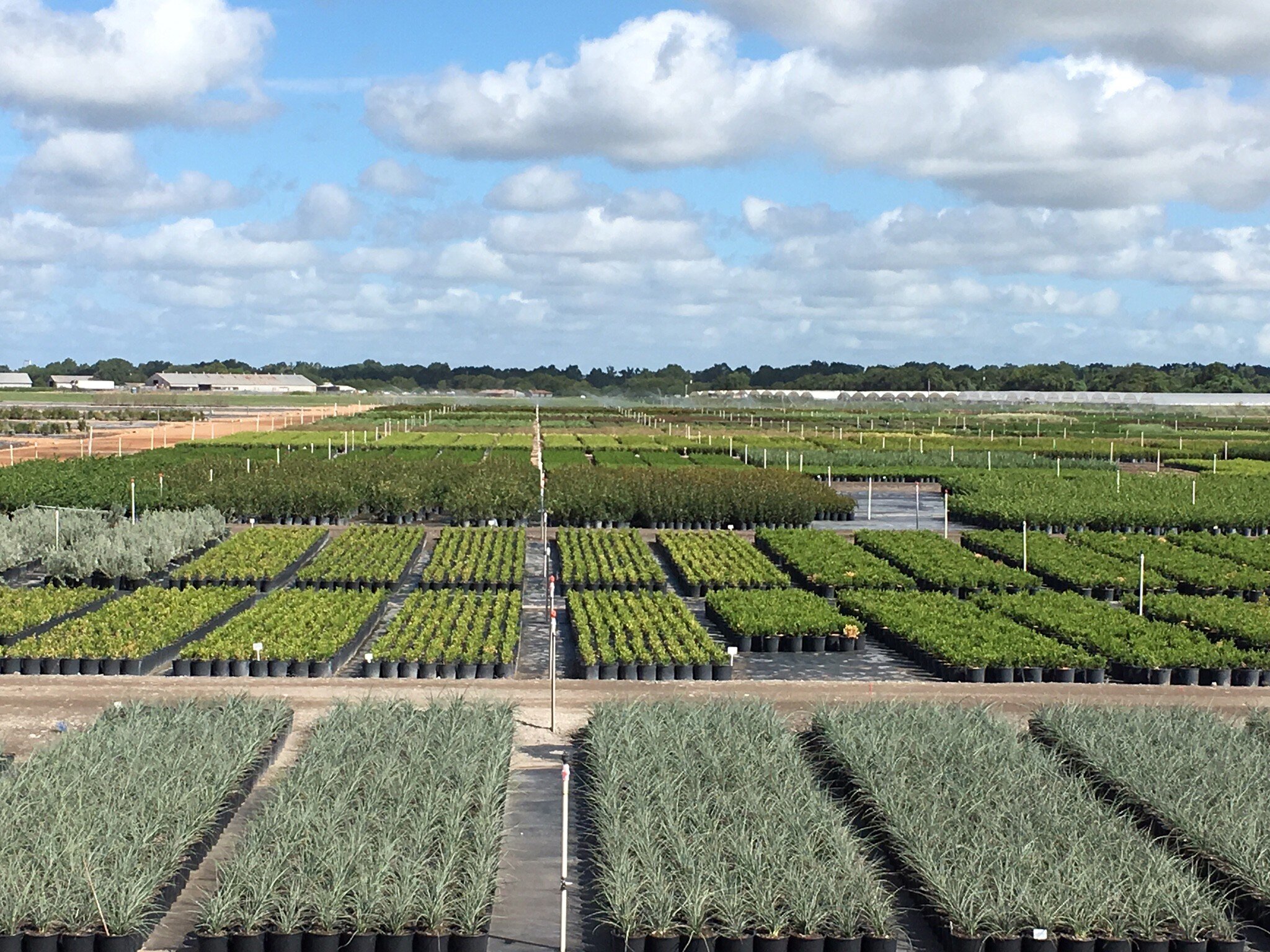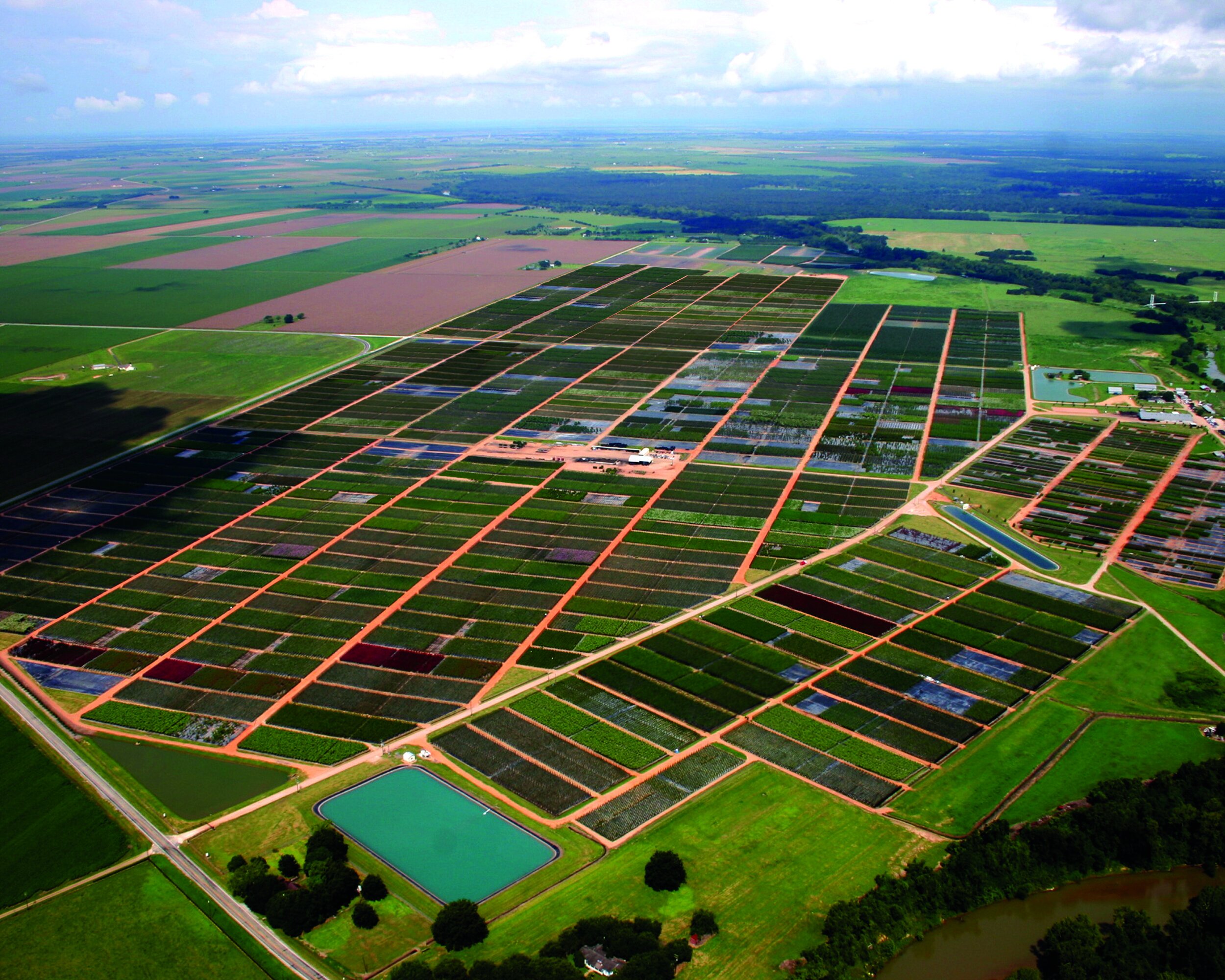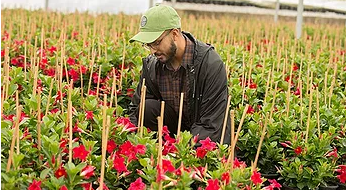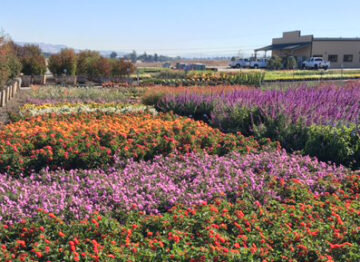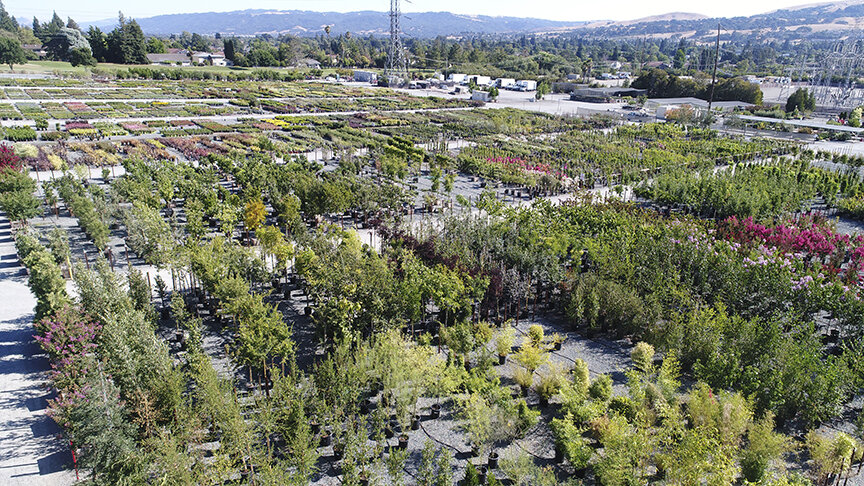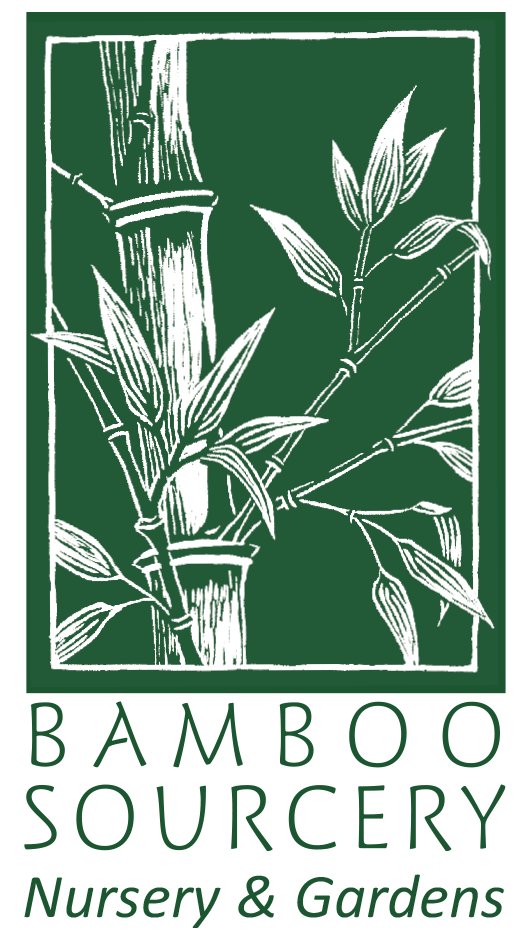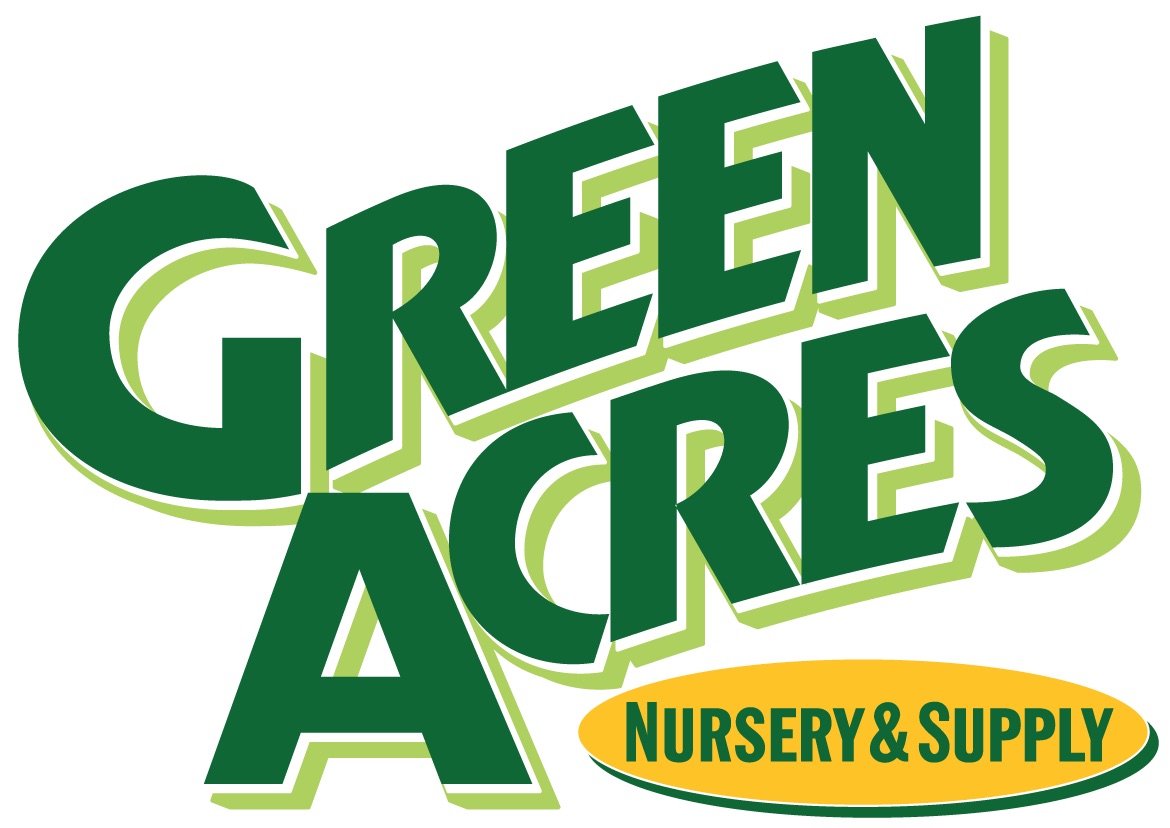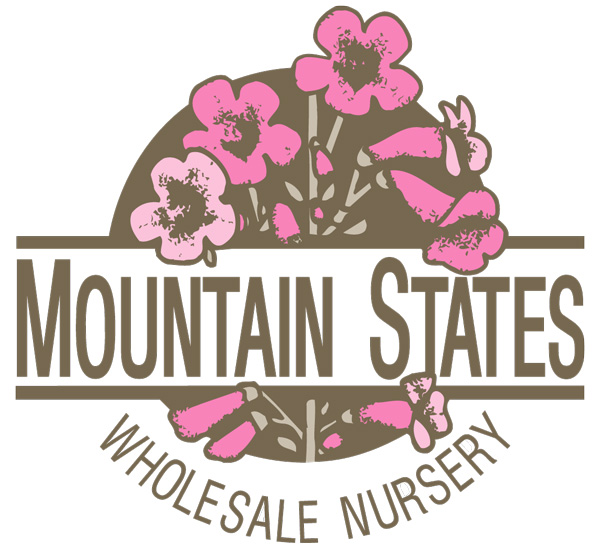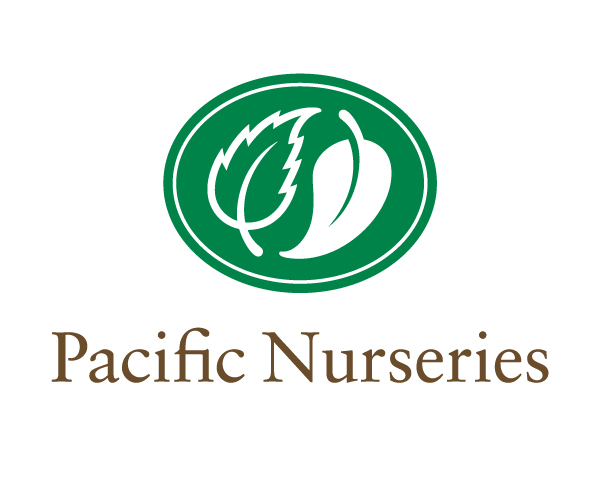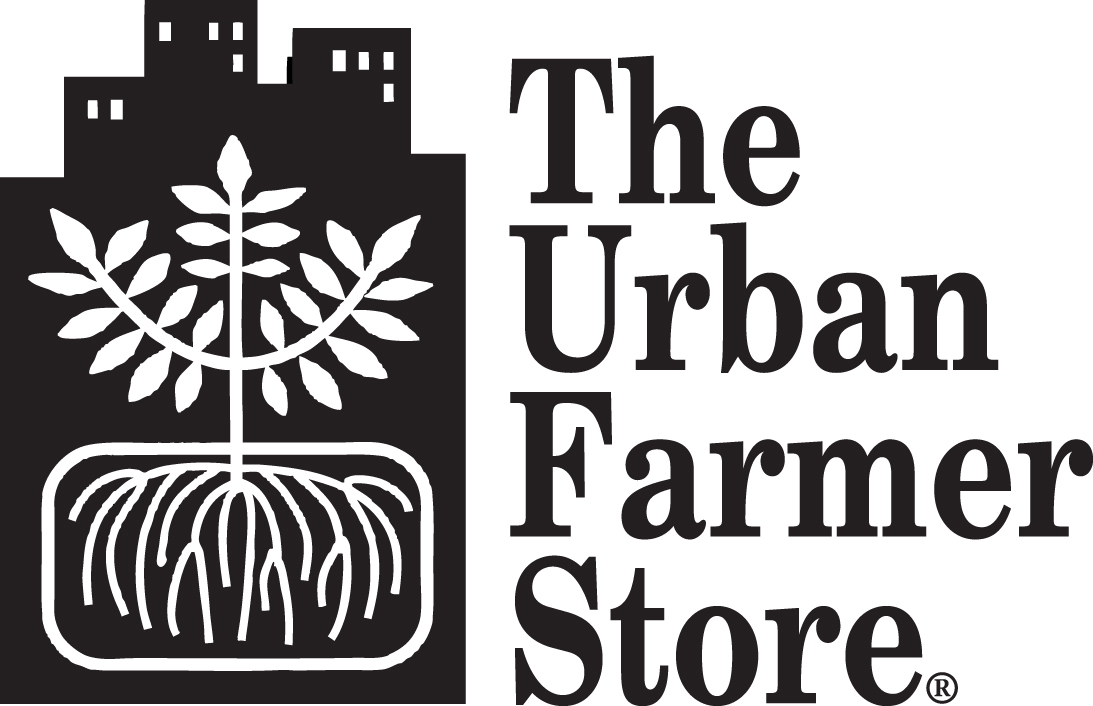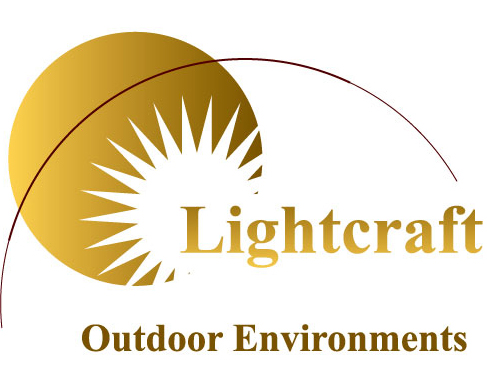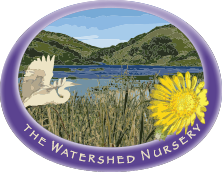Photo courtesy of The Watershed Nursery, an APLD CA Bronze Sponsor.
Designing today’s gardens
FROM THE CHAPTER PRESIDENT
Martin G. Carrion van Rijn
Greetings.
First of all, I wish to introduce myself. My name is Martin G. Carrion van Rijn, and I have the honor and privilege of serving the APLD California Chapter (Chapter) and our members as your President this year. Even though I know that these challenging and uncertain times are continuing, I am very excited for the opportunity to provide leadership and collaborate with the amazing APLD members and every Chapter and district leader. I look forward to supporting and promoting the practice of excellence in landscaped design and to collaborating with our industry sponsors.
Within our Chapter, we are working to prepare educational opportunities that I believe are key to what APLD stands for and offers to our members. One such opportunity is Advocacy and Sustainability, especially as it addresses our right to practice and ways for us to become more aware and advocate for regenerative practices and how to better serve the diversity of the communities that our practice affects. I encourage you to stay connected and engage wherever and whenever you are able and to make the most of your membership.
I find that as professional landscape designers, we are in a position to serve our clients and communities in varied and exciting ways. After all, we work and implement concepts and creative ideas of unity, synergy, balance, diversity, function, flow, and so much more. What does that ultimately mean though? I feel that to do our job in a responsible way, we need to understand the requirements and laws that govern both the natural world to keep it in balance, as well as the requirements, needs, and tastes of our clients or the human communities, and bring a balance between those intrinsically connected worlds. As a result, I believe we need to be aware of the larger communities and ecosystems that our practice affects and serve them as well in our designs and installations. My understanding is that balance is something that nature is almost always seeking, which can be achieved by supporting the richness of the natural biodiversity of a site, which in turn, creates unity and harmony, environmental spirituality, and an aesthetic that we, as humans, so much value in our natural and man-made landscapes. This brings a sense of wellbeing into our lives and, thus, I feel it is our privilege and responsibility as landscape designers to support and nourish that biodiversity.
In this issue of APLD California Landscape Design, the focus is to showcase the efforts and results of the APLD Greater Los Angeles (GLA) District’s collaboration with LA Environment Sanitation (LASAN) to offer the Los Angeles Biodiversity Symposium in November this past year. One of the Symposium’s objectives was to bring an increased awareness of the importance of biodiversity in our landscapes, as well as to give practical tools for developing protective strategies to safeguard the Los Angeles region’s resilience and sustainability. This awareness and importance biodiversity goes beyond the borders of the City of Los Angeles and needs to be practiced throughout the State of California.
I would also like to thank and recognize the Bay Area District (BAD) that brought to our members, with support by the Chapter, the program Cultural Humility for Anti-Racism on January 7, 2021. Last July, the Bay Area District (BAD) formed the Diversity, Equity, and Inclusion Committee. In order to effectively advocate for a sustainable future, it is vital for us to address inequity and exclusion that result from a lack of diversity. We look forward to more events and opportunities related to these issue to be brought to our members.
May you find this issue of California Landscape Design as inspiring and useful as I feel all of the issues have been. This publication is a rich resource of inspiration for and about our members.
I wish you all a prosperous and happy New Year, full of nourishing and diverse experiences and opportunities.
Sincerely,
Martin G. Carrion van Rijn
CONTENTS
Simply scroll down to read the articles.
You may also click on the section titles below.
Letter from the Chapter President
Martin Carrion
Reimagining with Biodiversity in Mind by Leesa Martling
Designing for Biodiversity in Our Gardens by Stephanie Bartron, FAPLD
Finding Balance in a World of Pests by Karrie Reid
Preserving Biodiversity by Shelkie Tao
TOOLS AND TIPS: Some useful resources for designers
Calscape review by Jackie Scheidlinger
Calflora review by Jackie Scheidlinger
Plantright review by Alex Stubblefield
Inaturalist review by Arleen Ferara
Meet the Boards
COMMUNITY CONNECTIONS:
Grab & Grow Gardens by Nan Sterman
Promoting Biodiversity through Public Education by Urban Water Group
Welcome New Members
Longtime CA Sponsors Announce Big Changes
Sponsor Plant Picks for Encouraging Biodiversity
Mountain States
Green Acres
Devil Mountain
Bamboo Pipeline
Urban Tree Farm
Emerisa
Everde
Sunset
Watershed
A special thank you to Leesa Martling and APLD Greater LA District
for sourcing the biodiversity content for this issue.
Photo courtesy of Shelkie Tao of Water Efficient Gardens.
Reimagining with Biodiversity in Mind
by Leesa Martling
Veridian Landscape Design
Los Angeles, CA
The varied reasons to incorporate California Native plants into urban gardens were discussed at length during the APLD-GLA Biodiversity Symposium 2020. To achieve a no-net loss of biodiversity in Los Angeles, we as designers have a responsibility to include California Natives into our design and plans. Using California Natives will encourage the survival of our native pollinators, local and migrating birds, and create corridors, forming paths to existing thriving biodiverse landscapes within the city and outlying areas.
Including California Natives and Cultivars into my garden designs combined with non-native or ornamentals is a strategy I’ve been using for several years. As with any garden, some combinations are successful and others not so much. Irrigation and good drainage are the most obvious challenge, but I’ve also been surprised how sturdy and adaptable some native plants can become in typical garden conditions.
My clients usually ask for flowers, verdant vistas, low water and maintenance requirements, as well as plants that they favor or are familiar with.
Through experience and trial and error, listed are a few combinations of natives and non-natives that have not only thrived together, but have also created interesting displays of texture, color and seasonal interest and require low to medium water use and no pesticides.
Layering has worked. A combination of a Myrica Californica Wax Myrtle hedging, fronted with a border of Salvia Wendy’s Wish and a foreground layer of Euphorbia Diamond Frost mixed with a few clumps of Sedum Dragons Blood made for a lush planting. For a more shady environment Oakleaf hydrangea planted with Heuchera maxima and Fragaria californica strawberry have made for a nice woodland look.
Australians play well with our Cali-Natives. A number of sturdy Leucandedron or Dodonaea paired with several or more Frangula Coffeeberry “Mound San Bruno'' and a few added Mimulus Monkey Flower or Epilobiom canum C. Fuschia in the foreground planted amongst some Smooth Leaf Agave made for an organized but naturalistic grouping.
A California Sycamore tree underplanted with drifts of Muhlenbergia rigens Deer Grass combined with Ozothamnus diosmifolius Pink Rice Flower turned out well. The Rice Flower held its own against the bulk of the Deer Grass and complemented the woody vibe of the Sycamore. Simple but effective.
Illustration by Leesa Martling.
In my own garden I’ve grown a patch of Kalanchoe beharensis among broken pieces of concrete and brick on a slope. I was given an Eriogonum giganteum, St Catherine's Lace at a plant swap and was warned it will get big, and did it ever. I planted the St Catherine’s Lace with a few Sulphur Buckwheats next to the Kalanchoe and the combo is striking, I call it my lunar landscape.
When using California Native intermixed with non natives in urban gardens remember: more is better. If encouraging biodiversity is what you’re after, try to plant as large a swarth of natives as you can within the scheme. But most importantly remember that the garden landscape is acting as a placeholder in the larger tapestry of existing biodiversity.
Together we can help sustain the goal of no-net loss in the coming decades and encourage the natural richness and beauty of a diverse environment within our state.
LA Biodiversity Symposium
by Debbie Gliksman, APLD
Urban Oasis Landscape Design
Los Angeles, CA
Event brochure for last November’s APLD-GLA Biodiversity Symposium.
In November, APLD of greater Los Angeles hosted a one-week-long Los Angeles Biodiversity Symposium, cosponsored by LA Sanitation and Environment (LASAN). Our city of Los Angeles has been designated a global biodiversity hotspot – one of only 36 in the world. LA has this designation because of the incredible ecological diversity that stems from the extraordinarily varied geography of our area. In fact, Los Angeles is the only city in the US that has a major mountain range running right through it with over 5000 ft of elevation changes. Sadly, this designation also means that the area’s biodiversity is severely threatened by urban development.
We heard from 10 speakers – a varied mixture of scientists, horticulturalists, landscape architects, and historians.
Why is Biodiversity important?
LASAN explains the importance of Biodiversity as follows: “The survival and well-being of the City’s residents also depend on ecosystem services provided by biodiversity, including air pollution reduction, strongly and rapidly mitigating and adapting to climate change, mental health and educational opportunities, water cleansing, and aesthetic benefits. These services are built directly from an integrated ecosystem of natural biodiversity and sustainable urban landscapes.”
Take the humble tree for example. Its incalculable benefits include sequestering carbon, supporting wildlife habitat, providing green infrastructure, creating a shade canopy, retaining water, reducing air pollution, and improving life quality.
Designing for Biodiversity in Our Gardens
by Stephanie Bartron, FAPLD
SB Garden Design
Los Angeles, CA
As garden designers, the wealth of biodiversity in our State brings opportunities, challenges, and responsibilities. Our vast, unique and beautiful native plant species offer opportunities to design beautiful, abundant gardens that support our endemic fauna, providing food and shelter. The choices we make in our designs can also affect how this fauna moves through and inhabits our gardens. As we plan for human traffic flow and outdoor living, we should also consider this for the other residents and visitors to our gardens.
The plants we specify, purchase, and plant for the gardens we design can provide food, forage and shelter for birds, mammals, insects, and vast fungal and microbial communities. These plants can also support and foster the genetic diversity of our native plant communities. Invasive plants, however, outcompete our native plants for resources, endangering our wildlands through increased fire danger, and fail to support the native fauna that has coevolved and depend on them.
Our designs, too, can be impactful. One of the main, recurring themes of the summit was the importance of connecting wildlife populations to maintain genetic diversity and species population. Rethinking the connectivity of wildlife corridors, both on the ground and flyways, will help connect isolated pockets of open space, wildlands, and parks. Our designed, constructed, and maintained landscapes can help to regenerate and preserve our rich biodiversity.
Prudent Fences
Fencing is important for many of our client’s properties, and sometimes legally mandated for safety (i.e. pool enclosure). Small children and pets need to be kept safe and prevented from wandering away. But, while good fences can make good neighbors, they disrupt neighborhood connectivity and thus should also be considered from a biodiversity standpoint.
In my own urban garden, our Ring camera has shown recent visitors including an opossum, raccoons, a coyote and many birds and squirrels. These animals were all filmed in my front yard, adjacent to my neighbor’s yard. There are no fences between this section of our yards, allowing urban wildlife to move freely.
I’m currently designing a large hillside garden with frequent coyote sightings, and the owners worry for the safety of their dogs and small child. We’ve therefore enclosed the entire back yard with chain link fencing, installing both a “snake fence” along the bottom and buried into the soil and coyote rollers along the top. Birds, insects, and lizards will all still be able to move through and over the backyard fences, and they will find forage and shelter in the native plants and trees that already cover the backyard slope.
The sloping front yard, however, will remain unfenced. This will allow wildlife shelter and food as they pass along the quiet hillside street. However, I now wish we had left a path from the front to the back, along the unused side section, for wildlife to pass through as well..
Moving forward, I will discuss neighborhood connectivity with clients when we talk about fencing, instead of starting with perimeter fencing as the default design. Where possible, I will try to limit fencing to outdoor living and recreational open spaces, so that pets and their people can stay safe, but leave unused areas unfenced. Where possible, I will encourage fencing to be limited to either the front or the back yard, not both.
Privacy is also an issue for many clients, and fences/walls are often the requested solution for this issue. However, especially for front yards where fencing is limited by city codes, hedges and trees can be a better solution. These also offer a great opportunity to support biodiversity within the garden, for the species just passing through the corridors created by our streets.
Habitat Hedges
Evergreen and dense hedges create visual privacy, but they do not prevent animals from moving through them into our gardens. Instead of tightly planted non-native species we can choose beautiful local natives that also function as living birdhouses and feeders. Mixed or single-species, spaced to allow the plants room to grow, and gently “naturally” pruned instead of tightly clipped, habitat hedges will still provide privacy for humans and offer shelter for birds and other wildlife.
At the Biodiversity Summit, Dr. Eric Wood presented a preliminary report on his work monitoring birds found foraging and resting in urban trees. He and his team documented both native and migratory birds and which tree species they were found visiting more frequently and in greater numbers. These large shrubs/small trees were listed by Dr. Wood as his top picks for bird favorites in Southern California, and they are all excellent candidates for habitat hedges:
Heteromeles arbutifolia/Toyon
Malosma laurina/Laurel Sumac
Rhus ovata/Sugarbush
Rhus integrifolia/Lemonadeberry
I recently pruned Toyon a client’s garden and noticed a few of the leaves had already been used by our native, beneficial leafcutter bees, as Carol Bornstien had illustrated in her presentation. Toyon berries, besides adding a festive holiday cheer to the hedge, are also favorites of many birds including Cedar Waxwings, and their spring flowers are always buzzing with pollinators. This habitat/biodiversity super star is now my go-to hedge plant.
With our help, the streets and gardens of our neighborhoods will continue to feed, shelter and nurture our extraordinary regional biodiversity. Inspired by our native forests, chaparral, oak woodlands, flowering meadows and riparian corridors, we can welcome our native and migratory species, connect our parks and wildspaces, and thus strengthen and preserve our great biodiversity into the future.
FINDING BALANCE IN A WORLD OF PESTS
by Karrie Reid
Area Environmental Horticulture Advisor
University of California Cooperative Extension
Sacramento, San Joaquin, Solano, and Yolo Counties
How did we get to the place where chemical pesticides are so frequently used to keep landscapes acceptable, and more importantly, how do we get out of it? The problems which arose when built landscapes became characterized by narrow uniformity can only be resolved successfully by moving toward greater biodiversity.
In healthy natural ecosystems, there is always a balance that allows each organism to survive without decimating others in the system. When the suite of plants in a region or even a single garden is narrow, there are few opportunities for balanced relationships that keep pests at levels we can tolerate.
I have seen repeated examples of pest issues that resolved themselves because the surrounding plant biodiversity fostered subsequent biological control by natural enemies—without the need for chemical intervention. Patience is required. There is necessarily a delay between the appearance of pests and the clean-up by natural enemies such as syrphid fly larvae, predatory mites, or parasitic wasps; the feast must be laid before the guests arrive. Eradication of all pests is therefore not the goal; what we should strive for is balance. (To learn more about natural enemies: http://ipm.ucanr.edu/PMG/NE/index.html ).
Creating resilient landscapes then becomes a matter of thinking broadly about the types of resources a wide range of insects, birds, reptiles, and amphibians might need throughout their life cycle. Pollen, nectar, and berries are primary food sources for beneficial wildlife, and thought should be given to providing these throughout the year. Educate yourself on which berries are beneficial and which are toxic (like Nandina domestica) to migrating birds; and make a list of suitable native species that provide for regional wildlife from one of the many websites devoted to this.
Accessible dishes of water, bird baths, and gentle fountains can be essential for insects and reptiles as well as birds during long, hot summers. The tightly packed leaves of a swath of Muhlenbergia rigens or a patch of Bulbine frutescens can provide overwintering shelter for ladybugs which hunker down inside the leaves away from wind and cold. More than once I’ve witnessed this as the primary source of aphid control for nearby plants in the spring when, a couple of weeks after the first aphid hatches out, the ladybugs wake up and have a feast, laying eggs that become larvae even more voracious than the adults.
In addition to planning for a wide range of plant life, we must educate clients to avoid resorting to chemicals at the first sign of a pest and allow constructed biodiversity to develop a balance of all the living organisms within it. While it may seem like a challenge to incorporate a higher number of plant species and forms into a cohesive design, it is well worth the effort to create and implement landscapes of biodiversity with a naturally balanced system of integrated pest management built right in, as these are the designs of a healthy future.
Preserving Biodiversity – One Native Garden at a Time
by Shelkie Tao
Water Efficient Gardens
Native gardens can provide so much benefits for us. They are low water, low maintenance, and support a wide variety of wildlife. One important benefit, among all the others, is that it can be a great place to help us preserve biodiversity.
“When we went in to take a closer look, we were treated with this gorgeous view.”
California is a hotspot of biodiversity: it “is home to more species of plants and animals than any other state, and is home to about one-third of all species found in the United States…including more rare plants than most states have plants” [source]. However, “More than 30% of California’s species are threatened with extinction” [source].
When I first saw a picture of Lilium pardalinum ssp. pitkinense (the Pitkin Marsh lily) on the internet, I was struck by its unique beauty. It is not something you would see every day. However, I also learned, it is one of those plants that are on the brink of extinction.
Last summer, I did a hike with a group of friends in the Los Angeles mountain area. It was a heavily wooded, lush, green state reserve. We followed the trail for about a mile, after we made a turn, we saw this small stream to our right in the woods. When we went in to take a closer look, we were treated with this gorgeous view (pictured at right).
Last year, when CNPS did its news release for the new state budget to protect the state’s biodiversity against loss by extinction, the cover photo chosen was a Lilium pardalinum ssp. pitkinense, a testament to its beauty and appeal.
TOOLS AND TIPS:
Calscape review
by Jackie Scheidlinger
From the Ground Up
Camarillo, CA
Let me introduce you to Calscape—a very useful addition to your toolbox. Managed by the non-profit organization California Native Plant Society (CNPS), this website provides you with the data to help you and your clients to understand which California native plants will thrive in your geographic region, and which ones will struggle to survive.
As we all know, the state of California covers a lot of territory and a wide variety of geographic climates. As a consequence, we have a very environmentally diverse population of native plants and wildlife that have co-evolved together. The particular plants and insects that have adapted to grow in the coastal regions are completely different than those in the interior valleys. What Calscape does is to track the occurrence of native plant species in the different regions and aggregate data from a variety of sources (including academic institutions, Jepson Flora Project, Theodore Payne, Las Pilitas). They use that data to create maps and a searchable database for locating the plants that are native to your specific region, and that attract the butterflies, moths, and other pollinators that feed upon those plants. They also list all the nurseries where you can purchase these plants or their seeds.
Calflora review
also by Jackie Scheidlinger
From the Ground Up
Camarillo, CA
If the idea of Calscape intrigues you, you may also like CalFlora.
CalFlora is another database for searching photos of California native plants by genus, common name or scientific name, lifeform category, and a couple of other parameters, like county and plant community. Plant community is broken down very specifically, into 34 categories, from Alpine Sink to Wetland-Riparian. Another interesting innovation is that they break down native status into several categories, i.e. Native to California, not native to California, Cal-IPC invasive plants, rare plants, and plants that like serpentine soil.
You can do a broad search by genus, and you will get all the species within that genus that are native to California, but you can break it down further and get only those Eriogonum that are native to Los Angeles County (57 matches), or all the species of Yucca that are native to Inyo County. (There are four types: Yucca baccata, Y. brevifolia, Y. whipplei, and Y. schidigera.) Los Angeles County has 61 different varieties of lupine that are native to it. If you click on the name of one type, you get a distribution map that shows where in California it’s been observed. You can also search by address. Entering my home address, I got back 90 plants that are naturally occurring in my region. If I limit the search to riparian grasses that grow in shade, the number goes down to six. But I’ll know exactly which six will do well in my dry stream bed.
If you were looking for native trees that grow in Woodland Hills, you will discover there are five—3 types of oak, Laurel sumac, and Prunus ilicifolia.
As with CalScape, the record-keeping and observations are done by volunteers, or “citizen-scientists” if you prefer. Whether you’re a professional botanist or an amateur, they actively welcome your input.
Planting right with PlantRight
by Alex Stubblefield
Project Manager at PlantRight
You may know that invasive plants cause extensive damage to California’s wildlife, agriculture, water, and fire safety, but did you know that horticulture has historically been the top pathway of introduction for invasive plants?
PlantRight is a voluntary, science-based, and collaborative program working to stop the sale of invasive horticultural plants in ways that are good for business and the environment. PlantRight unites leaders from California's nursery and landscape industries, conservation, academia, and government to find common ground and cost-effective solutions. It is currently housed at Plant California Alliance.
iNaturalist: a casual user’s observations
by Arleen Ferrara
Satori Garden Design
Santa Monica, CA
I had heard about the iNaturalist app some time ago but I was reluctant to try it because I assumed it was like all of the other plant ID apps that were spotty at best. Boy was I wrong on many counts! iNaturalist is so much more than a plant ID app for one thing. It is a super charged, crowdsourced, nature observing and documenting machine. It’s also fun to use.
I found out how fun it was to used this fall when I went through the California Naturalist certification program. This program, ran by UC cooperative extension, is all about observing and documenting nature. As a landscape designer it was so fun to be able to slow down in a natural setting and make those thoughtful observations. We designers work with plants all of the time but sometimes in the rush to get projects done we don’t always have the time to really observe let alone document and sketch the subtleties like the margin of a leaf or the shape of a seed pod. During the course we used both journaling, sketching and iNaturalist to hone our sensitivities to the natural world.
Photo courtesy of The Watershed Nursery, an APLD CA Bronze Sponsor.
Meet the Boards
APLD California Chapter 2021 Board of Directors: These are the volunteers working at the state level, behind the scenes, to ensure that you have the best value for your APLD membership and that your right to practice landscape design in the state of California is protected. We work hard, but are a fun group and are always looking for new volunteers. Do you have skills and are willing to help by taking on just one thing? Please consider serving at the Chapter (state) or District (local) level.
CA Chapter President
Martin Carrion Van Rijn
president@apldca.org
CA Chapter Treasurer
Tina Roushall
treasurer@apldca.org
CA Chapter Membership Chair
Debbie Seracini
membership@apldca.org
CA Immediate Past President
Francesca Corra, APLD
treasurer@apldca.org
CA Chapter Secretary
VACANT
CA Chapter Sponsorship Chair
Julie Molinare
sponsorship@apldca.org
CA Chapter President Elect
VACANT
CA Chapter Communications Chair
Laura Kukulski
communications@apldca.org
CA Chapter Vice President
VACANT
CA Chapter Advocacy/Sustainability
Cheryl Buckwalter advocacy@apldca.org
APLD Bay Area District 2021 Board of Directors: These are the volunteers working at the local level in the greater San Francisco Bay area. If you’ve been thinking about getting more involved with APLD, please contact our president at BAdistrict@apldca.org.
Bay Area District President
John Black, APLD
BAdistrict@apldca.org
Bay Area District Immediate Past President & Current District Programming Chair
Janet Cohen
Bay Area District Vice President
VACANT
Bay Area District Secretary
Maryanne Quincy, FAPLD
Bay Area District Interim Treasurer
Tina Roushall
Bay Area District Communications, Technology & Social Media Chair
Laura Kukulski
Bay Area District Technology & Social Media Co-Chair
Gün Ünsal
Bay Area District Membership Co-Chair
Mary Lou Hadley
Bay Area District Membership Co-Chair
Laurie Schofield
Bay Area District Sponsorship Chair
VACANT
Bay Area District Diversity, Equity & Inclusion Chair
Sophia Cunningham
Bay Area District Member At Large
4 VACANT (North Bay, East Bay, South Bay, Peninsula)
APLD Sacramento District 2021 Board of Directors: These are the volunteers working at the local level in the Central Valley. If you’ve been thinking about getting more involved with APLD, this is a great place to start. Please contact our president at SACdistrict@apldca.org with any questions you may have about volunteering. We can especially use help with these positions: secretary, communications and PR, membership, and sponsorship.
Sacramento District President & Membership Chair
Soleil Tranquilli
GLAdistrict@apldca.org
Sacramento District Vice President & Secretary
Marcia Scott
Sacramento District Treasurer & Immediate Past President
Martin Carrion Van Rijn
president@apldca.org
Sacramento District Advocacy & Sustainability Chair
Cheryl Buckwalter
APLD Greater Los Angeles District 2021 Board of Directors: These are the volunteers working at the local level in the greater Los Angeles area. If you’ve been thinking about getting more involved with APLD, this is a great place to start. Please contact our president at GLAdistrict@apldca.org with any questions about volunteering.
Greater LA District President
Debbie Gliksman, APLD
Greater LA District Immediate Past President
Johanna Woollcott
Greater LA District Vice President
Leesa Martling
Greater LA District Secretary
Jacquelyn Scheidlinger
Greater LA District Treasurer
Joan Bolton
Greater LA District Advocacy & Sustainability Chair
VACANT
Greater LA District Communications, Social Media, Community Outreach Chair
Toni Pogue
Greater LA District Sponsorship Chair
Julie Molinare
Greater LA District Programs Co-Chair
Lisa Smith
Greater LA District Member At Large
Isa Eaton
Greater LA District Programs Co-Chair
VACANT
Greater LA District Member At Large
Cathleen Lynch
Greater LA District Membership Chair
VACANT
Greater LA District Member At Large
Arleen Ferrara
APLD San Diego District 2021 Board of Directors: These are the volunteers working at the local level in the greater San Diego area. If you’ve been thinking about getting more involved with APLD, please contact our president at SDdistrict@apldca.org with any questions about volunteering.
San Diego District President
Andrea Doonan
SDdistrict@apldca.org
San Diego District Immediate Past President
David Clarke, APLD
San Diego District Vice President
VACANT
San Diego District Secretary & Programs Co-Chair
Lisa Bellora
San Diego District Treasurer
Michelle Langdon
San Diego District Advocacy & Sustainability Chair
Steve Harbour, APLD
San Diego District Communications Chair
VACANT
San Diego District Membership Co-Chair
Debra O’Leary
San Diego District Sponsorship Chair
Kimberly Alexander
San Diego District Programs Co-Chair
Jackie Seidman
San Diego District Programs Co-Chair
Amelia Lima, FAPLD
San Diego District Programs Co-Chair
Angela Benson
San Diego District Member at Large
Brad Lefkowits
San Diego District Member at Large
John Beaudry
San Diego District Member at Large
Joel Berlin, APLD
San Diego District Member at Large
Tracey Grillo
APLD CA Chapter Support Staff: You won’t see them at District events, or even board meetings, but they are the very important, behind-the-scenes folks with special skills to keep APLD CA Chapter up and running smoothly. We so appreciate all they do.
Frank Weaver is our IT wizard. Many of our operations, like sponsorship renewals for instance, are conducted through the website. Frank has proven to be a godsend to us, as he is incredibly responsive, dependable and knowledgeable. When he isn’t sitting in front of a computer, he enjoys adventurous travel with his son who lives overseas.
Maggie J Elias has designed and edited our quarterly publication California Landscape Design for the last three years. Since graduating college in the midst of a global pandemic, she has returned home to the Bay Area and works as an art director in advertising.
Amy Ukena has been doing administrative work for the chapter for a few years now. Among other things, she keeps the online calendar current, keeps chapter and district mailing lists current and sends out mailings regarding programs and special messages to our members. She lives in the SF Bay Area and spends evenings as one half of the jazz duo “Hans and Amy”.
Community Connections
Grab & Grow Gardens
by Nan Sterman WaterWise Gardener
Encinitas, CA
We jumped in with both feet ...
Sometimes, you just have to jump in with both feet, as my colleague Mim Michelove and I discovered when we started Grab & Grow Gardens last April.
The COVID-19 quarantine had just begun. News reports showed block-long lines of cars waiting for bags of free food distributed by local hunger relief agencies. The organizations were, and continue to be, a county-wide safety net for desperate people who lost their jobs and could no longer pay rent, pay bills, or afford food.
Mim and I are both involved in food and hunger issues. She is founder and CEO of Healthy Day Partners, a nonprofit that works on health and food equity issues, creates educational farms and gardens, and promotes healthy eating for children and their families. I’ve been involved in food systems since my college days. In fact, several episodes of my TV show, A Growing Passion focus on food systems, food deserts, hunger issues, and related topics.
A late-night phone call between Mim and myself quickly turned into a brainstorming session that birthed Grab & Grow Gardens. It occurred to us that food deserts (areas without supermarkets or other places to buy fresh food) are also nursery deserts. So people who have the skills for and/or interest in growing vegetables don’t have access to seeds or seedlings.
To us, people growing their own vegetables just makes sense – it’s a way to feed their families, an activity for parents to share with out-of-school children, a focus for seniors in seclusion, an opportunity for children to learn where food comes from, and a tools for self-sufficiency.
We envisioned Grab & Grow Garden “kits” of seedlings with simple directions in English and Spanish for growing on a patio, balcony, or the front porch.
Promoting Biodiversity through
Public Education
by Tom Rau and Carolyn Griffiths
Urban Water Group, Inc.
Los Angeles, CA
Completed in 2020, the Las Virgenes-Triunfo JPA Pure Water Sustainability Garden located in Calabasas, California is a 7,700 square foot series of garden “classrooms.” The Urban Water Group developed the conceptual design, provided landscape architectural services, and created content for the comprehensive educational signage program and website pages.
The project was commissioned by the Las Virgenes Municipal Water District as part of its Pure Water Demonstration Facility, the precursor to a cutting-edge water purification plant. This plant will provide the means for testing different purification systems and training operators. Additionally, visitors will be allowed to view the process in action.
This commitment to public education led to the Pure Water Sustainability Garden, which surrounds the Facility and contains fifteen distinct rooms as well as an amphitheater. Each room has an informative sign that explains the primary – although not the only – purpose of the space, with QR codes to website pages where visitors can view educational videos, browse supporting content, and download plant lists.
Welcome New Members
Please give a warm welcome to these new members of the APLD California Chapter.
Qualified Professional Members
A landscape designer who engages in the practice of landscape design for monetary compensation and contains more than 3 years of professional landscape design experience. Documentation of education and experience is required.
Christian Douglas
Christian Douglas Design (DBA) for The Backyard Farm Co, Inc (registered name with SOS)
San Rafael, CA
Lorri Hart
Clear The Way Landscape Design
Napa, CA
Professional Members
A landscape designer who engages in the practice of landscape design for monetary compensation and contains more than 3 years of professional landscape design experience. Documentation of education and experience is required.
Rania Affan
Odeh Affan Design
Millbrae, CA
Kimberly Emmen
Harmony Landscape Design
Paso Robles, CA
Eric Saline
Wild Made Design
San Diego, CA
Lindsay Mugglestone
Berkeley, CA
Emerging Professional Members
An individual who has been practicing landscape design for one to three years and is starting a career in landscape design. Membership requires affirmation of education and experience, but not documentation.
Farah Saquib
Santa Ana, CA
Student Members
An individual who is actively enrolled, on a full or part‐time basis, in a landscape design, landscape architecture or horticulture program. Membership is limited to five years of membership at this level and proof of enrollment must be submitted.
Penny Betts, Bay Area District
Lisa Templeton, Bay Area District
Samuel Erickson, Greater LA District
Kathleen West, Greater LA District
Megan Berndt, Greater LA District
Getting To Know FARAH, Peter, & Isabelle
We reached out to a few members with questions so that we can all get to know a bit more about them and here’s what they answered.
Farah Saquib
Santa Ana, CA
Q: How did I hear about APLD?
A: Last Winter, when I was studying to get my certificate as a sustainable landscape designer, I was searching online for a professional body that represents landscape designers. I came across the flyer for APLD membership which I put on my calendar, to join as soon as I got the certificate in my hands. Even if I hadn’t come across it at that point, during one of our subsequent classes at Saddleback Community College, we were told about APLD and that it would be a good idea to join it as an emerging professional.
I have to say that I am really happy I joined it. It is a tremendous resource for us.
Q: What environmentally sustainable concepts do you apply to your landscape design practice?
A: I got trained as a sustainable landscape designer. My initial reason to get into the program was my interest in Permaculture, which I practiced on my own garden. I was already a firm believer in sustainability. I believe as designers we cannot afford to take a back seat on the issues facing the planet, especially where we can influence and educate. I and my partners, push native plants whenever possible. We always try to add a water harvesting/conservation feature in all the designs we work on. I am also QWEL certified.
Q: Who or what inspires you?
A: Too many people inspire me. Mostly I am drawn to very clean, modern minimalist designs.
I am also inspired by Geoff Lawton, and what he and others like him are doing to for sustainability.
Peter M. Meertens
Educator at Cal Poly San Luis Obispo
pmeerten@calpoly.edu
Q: How did you find out about APLD and what led you to join?
A: I found out about APLD, through your publication on watershed landscaping. I started teaching part-time last year at Cal Poly in the Environmental Horticulture department and I used the publication as a guide to teach a landscape course. I was led to join because I wanted to support the organization and because it provides the students a professional organization to join.
Q: What environmentally sustainable concepts do you apply to your landscape design practice?
A: I am not a practicing landscape designer, but I am teaching landscape design and was previously a landscape designer and contractor for many years. On a broad scale, the key sustainability concepts I teach are for students to see themselves as both horticulturalists and conservationists and to see landscape projects as opportunities to not only beautify the environment for people but to see them as opportunities to conserve natural resources.
Q: Who or what inspires you?
A: I am inspired by the students in my classes and by nature. The students are very bright and are wanting to make a tangible difference in the world. Nature inspires me because it is being threatened and we must do all we can to protect and restore it.
Isabelle Duvivier, FAIA LEED AP
Allied Member from Greater LA District
Duvivier Architecture + Urban Design
Venice, CA
Q: How did you find out about APLD and what led you to join?
A: I first heard about The Association of Professional Landscape Designers a few years ago when a sustainable house I designed in Santa Monica was on an APLD tour. The garden was designed by talented APLD member, Susanne Jett of Jettscape Landscapes and so she was actually my initial intro.
In November of last year APLD held an amazing zoom conference on Biodiversity in Los Angeles and I decided to sign up at that time. I was glad I did; it was a very well-organized, topical and timely conference, the best I have been to in years.
Q: What environmentally sustainable concepts do you apply to your landscape design practice?
A: I am a building architect and a Fellow of the AIA, but I am also deeply interested in landscapes - primarily because I believe you can’t design a house without considering the whole site. This of course extends not only to the landscaping, but to the surrounding environment including wind currents, neighbors, views and outdoor spaces. I suppose that the most impactful way I influence the landscapes of the houses I design is by deciding early on the location of stormwater collection and its on-site use. This includes not only water collection but greywater use. I also consider the neighbor-friendly location of trees and solar features to avoid conflicts.
Native plants are also a big consideration with me. My own home has been on the Theodore Payne Garden Tour five times. In my garden I collaborated with Jettscapes, Heytanks, Honeylove, and many other forward-thinking experts to achieve an ecologically balanced, sustainable, attractive and “critter friendly” yard. Currently, a CalState LA graduate student is doing research in my garden comparing the habitat value of a native garden (mine) to a neighboring conventional garden. In ½ hour, the student counted 45 birds and 12 different species in my yard. In the neighbor’s, she counted just 1.
Q: Who or what inspires you?
A: I am inspired by nature itself and by the people who understand, value and fight to keep nature an integral part of our lives. I am currently a member of the Community Forest Advisory Committeee in the City of Los Angeles and was appointed to this position by my Councilmember. This group is fighting to protect mature trees and improve conditions in the City for newly planted trees, the important and necessary habitats they provide, and ultimately, for the citizens who will reap the benefits.
I have also been developing building prototypes and principles that demonstrate how houses/housing can be built while also integrating habitat into the design. The City of Los Angeles is up-zoning. I am working to make sure that as our city densifies, we preserve spaces for nature so that all residents can enjoy its benefits and so that the City can become an oasis in which nature thrives. Doing this work is, in itself, an inspiration for me.
Photo courtesy of The Watershed Nursery, an APLD CA Bronze Sponsor.
APLD California Chapter
Sponsors
Through sponsorship of APLD California Chapter, these industry leaders declare their support for best practices, educational programs and events, and the highest standards in landscape design. From veteran materials suppliers to producers of cutting-edge landscape products, these companies have committed to connecting with professional landscape designers and our clients.
Three APLD CA Sponsors Announce Big Changes
Humboldt Redwood Rebranding as Humboldt Sawmill
You may be familiar with Humboldt Redwood, a Platinum Sponsor of the APLD California Chapter. With a commitment to expanding the footprint of sustainably grown and harvested redwood and Douglas-fir lumber and timbers, Humboldt Redwood announces its new branding as Humboldt Sawmill.
“The Humboldt Sawmill branding more accurately reflects our company’s capabilities as a manufacturer and distributor of not just redwood lumber products, but Douglas-fir as well,” according to Director, Marketing, Jessica Hewitt.
In addition, the company’s website has been updated to highlight Resources, including Case Studies and Press Releases of interest to consumers and professionals alike.
“Interest and inquiry around our products are extremely high. Redwood from Humboldt Sawmill was recently selected for an expansive remodeled deck project on Harrison Lake, B.C. The City of Berkeley specified Forest Stewardship Council® (FSC® C013133) certified Humboldt Sawmill redwood on its Berkeley Tuolumne Camp project in the Stanislaus National Forest,” Hewitt adds.
Humboldt Sawmill provides free, online resources for Landscape Designers wishing to complete continuing education (CEU) credits or broaden their knowledge of redwood decking and timbers. Please visit https://www.GetRedwood.com/Architects for resource links and additional information. Learn more about this PLATINUM SPONSOR
at https://www.GetRedwood.com/.
Photos courtesy of Humboldt Sawmill.
TreeTown USA (AKA Village Nurseries) Rebranding as Everde
APLD California Silver Sponsor TreeTown USA (formally known as Village Nurseries) has rebranded and will now operate under a new name: Everde Growers. The rebrand follows nearly six years of strategic acquisitions to expand the company’s footprint nationwide, with farms operating in Oregon, California, Texas, and Florida.
Everde Growers views the rebrand as an opportunity to build and fortify its relationships in the industry. “Our commitment to our customers, employees, and suppliers is stronger than ever,” Saperstein stated. “Having a single brand identity will help to streamline and improve many of our processes.
Everde Growers is a privately-owned business headquartered in Houston, Texas, with 14 farms totaling over 6,700 production acres across Texas, Florida, Oregon, and California. The company has a coast-to-coast footprint for its broad mix of high-quality plants that includes over 5,000 unique selections. To learn more about Everde Growers, visit www.everde.com.
Photos courtesy of Everde Growers.
Devil Mountain Wholesale Nursery Expanding Throughout the State
APLD California Gold Sponsor Devil Mountain Wholesale Nursery (“Devil Mountain”) has acquired BrightView Tree Company, based in Fillmore, Calif.
Devil Mountain Wholesale Nursery, based in San Ramon, Calif. and founded in 1995, is a leading provider of a full range of plant materials to the wholesale landscape markets, particularly in Northern California, with more than 5,000 landscape contractor and other customers.
The acquisition of BrightView Tree Company will support Devil Mountain’s growth plans and will accelerate its entry into new markets, especially Southern California. With the acquisition and the pending opening of two other Los Angeles locations, Devil Mountain’s operations will encompass eleven locations throughout California and Arizona consisting of eight landscape sales yards and more than 1,100 acres of landscape plant and tree production. The Arizona operations of BrightView Tree also include Swan Hill Olives®, a proprietary and market leading non-fruiting and low-pollinating landscape olive tree.
Devil Mountain and BrightView Tree Company are both deeply focused on superior customer service and highest quality plant and tree production. The combined company will offer premium quality plants and trees at a competitive price with a focus on expedited sales to landscape professionals and custom growing operations for large customers. Devil Mountain will become one of the largest and most comprehensive landscape providers in the Western U.S.
Devil Mountain Wholesale Nursery is the largest distributor of landscape plants in the San Francisco Bay Area and throughout Northern California. Devil Mountain maintains best in class nurseries, conducts a robust brokerage service, and operates a growing facility in the Central Valley for premium trees and plants, including the Sunset Western Garden Collection. Since 1995, Devil Mountain has been a single source nursery providing plants to commercial and residential landscape companies, landscape architects, municipalities, and major end users.
For more information, visit www.devilmountainnursery.com.
Photos courtesy of Devil Mountain Wholesale Nursery.
ON THE SUBJECT OF BIODIVERSITY…
Several of our wonderful sponsors have assembled plant lists for attracting birds and pollinators.
Click images to enlarge.
Mountain States Wholesale Nursery:
PLANTS TO ATTRACT POLLINATORS
Buddleja marrubiIfolia—Woolly Butterfly Bush
This dense, rounded shrub is covered with silver, pubescent leaves. Orange, marble-sized blossoms occur throughout the year, with the heaviest bloom in spring and summer. They are not extremely showy, but they attract many butterflies. 5ft x 5ft.
Calliandra x Sierra Starr™ PP15387—Sierra Starr Fairy Duster
Sierra Starr® is a hybrid between Calliandra eriophylla (Pink Fairy Duster) and Calliandra californica (Baja Fairy Duster). This clone blooms almost year-round with stunning bright red flowers, which are irresistible to hummingbirds and native bees. 5ft x 5ft.
Chrysactinia Mexicana—Damianita
This small evergreen shrub has fragrant, bright green needlelike foliage. It blooms heavily in the fall and spring with golden daisy-like flowers. This tough, durable plant tolerates heat, cold, full sun and reflected heat exposures, but needs well-drained soil. 2ft x 2ft.
Conoclinium dissectum Boothill™—Gregg’s Mist Flowers
During the warm season this plant is covered with clusters of fuzzy lavender flowers that are magnets for butterflies. Periodic pruning throughout the year will help maintain a denser form. Provide moderate irrigation and some afternoon shade. 2ft x 3ft.
This durable, semi-deciduous groundcover has bright green, fine-textured, aromatic foliage. Small yellow flower spikes carpet Sierra Gold® in the spring and fall. Due to its compact size and heat tolerance this plant is a good choice for parking lot planters and street medians. 1ft x 3ft.
Melampodium leucanthum (Blackfoot Daisy)
This mounding perennial has narrow grey-green leaves, brittle stems, and is covered with small white daisy flowers in the warm months. Plant in full sun, well-drained soil, and be careful not to overwater. It is reported to be deer resistant. 1ft x 2ft.
Sphaeralcea ambigua (Globe Mallow)
This perennial has a relaxed, sprawling form. The small, gray-green, three lobed leaves are covered with tiny irritating hairs. Flower colors vary greatly in the wild, with the most common color a light orange. Other colors include white, lavender, pink, and red. 3ft x 4ft.
Mountain States Wholesale Nursery:
PLANTS TO ATTRACT BIRDS
Calliandra eriophylla (Pink Fairy Duster)
This tough native shrub has tiny fern-like green leaves that drop in the winter or in extreme summer drought to expose the the densely-branched form. Light pink to white powder puff flowers appear for a short time in the spring. 3ft x 3ft.
Chilopsis linearis (Desert Willow)
This deciduous tree usually grows in a shrubby, multi-trunked form. Long narrow bright green leaves give a willowy appearance. Large orchid-like flowers provide warm season color, attracting hummingbirds and bees. 25ft x 25ft.
Fouquieria splendens (Ocotillo)
Long, spiny branches often referred to as “canes” radiate from a central base in a vase shape. Vivid red tubular flowers appear at the branch tips primarily in spring, but may also occur after summer rains. Hummingbirds love the blossoms! Reliable nursery-grown seedlings are now widely available in the trade. 15ft x 10ft.
Hyptis emoryi (Desert Lavender)
This evergreen, upright desert shrub is native to the hot dry slopes of the Sonoran desert at elevations up to 3,000 feet. The powder gray foliage contrasts well with clusters of small violet-purple flowers that occur from spring through fall. The opposite leaves have coarsely toothed margins and a pungent, peppery fragrance. 10ft x 12ft.
Justicia californica (Chuparosa)
This sprawling, open shrub is native to gravelly washes and rocky slopes of the Sonoran Desert at elevations under 2500 feet. It is usually leafless, with succulent green stems. Small, showy red tubular flowers occur from spring to fall, and are irresistible to hummingbirds. Plant in full sun and well-drained soil. 5ft x 5ft.
Opuntia cacanapa ‘Ellisiana’ (Hardy Spineless Prickly Pear)
When someone asks for a cold-hardy spineless prickly pear, this is the one to use! During the summer months it sports large, bright yellow blossoms that provide nectar for hummingbirds. These are followed by attractive and edible bright red fruits called “tunas”. 4ft x 6ft.
Prosopis glandulosa v. glandulosa Maverick (Thornless Texas Honey Mesquite)
Maverick® is a spreading deciduous tree with a fast growth habit. This is a grafted thornless selection of the Texas Honey Mesquite. It combines lacy bright green foliage with smooth grey bark. Yellow catkins are produced in the spring after the trees leaf out. 35ft x 35ft.
Green Acres Nursery & Supply:
PLANTS TO ATTRACT POLLINATORS
A quintessential pollinator favorite from late spring to early fall. Many spikes of brightly colored flowers bloom atop green, licorice-scented foliage. Ideal for use in pollinator gardens, borders, accents or containers. Deer Resistant. Attracts butterflies, bees, and hummingbirds. 2'-3' tall, 2'-3' width.
Abutilon hybrid (Flowering Maple)
The evergreen perennial with green, maple-like leaves has hanging bell-like flowers from spring through fall and sporadically throughout the year. Attracts bees, hummingbirds, and butterflies. Deer-Resistant, Long Bloom Season, Showy Flowers. 8'-10' tall, 8'-10' width.
Penstemon heterophyllus 'Margarita BOP' (Foothill Penstemon ‘Margarita BOP’)
A California native! This perennial forms an upright, spreading mound. Spires bear small, tubular flowers in an incandescent blue-violet from late spring through summer. It will thrive in waterwise native gardens. Attracts hummingbirds, butterflies; Deer-Resistant. 1'-2' tall, 2'-3' width.
Kniphofia uvaria (Red Hot Poker)
The Red Hot Poker is a pollinator favorite. Tall flower spikes rise above grass-like foliage in summer or fall. Red, orange, coral, yellow buds change in color as they open. Plant in containers or as accents in garden beds. Waterwise; attracts hummingbirds, butterflies. Deer-Resistant. 3'-4' tall, 3' width.
Perovskia atriplicifolia (Russian Sage)
A striking shrubby perennial with upright habit. Its gray-green foliage is topped with small, lavender-blue flowers from late spring through summer. Often planted as a backdrop, in borders or in groupings. Waterwise, Attracts Butterflies, Fragrant, Deer-Resistant. 3'-4' tall, 3'-4' width.
Thymus serpylium ‘Elfin’ (Elfin Thyme)
This versatile groundcover in known for its green aromatic foliage that produces tiny lavender flowers in summer. Popular as a container plant, groundcover and between pavers. Fragrant Foliage, Deer-Resistant, Attracts Butterflies, Evergreen. 2" tall, 4"-8" width.
Arbutus ‘Marina’ (Marina Strawberry Tree)
The evergreen, multi-trunk tree with oval, dark green, glossy leaves has smooth, mahogany, peeling bark. The showy, drooping clusters of rosy pink, bell-shaped flowers appear from fall to late winter. Waterwise, Deer-Resistant, Bird Friendly, Attracts Birds, Attracts Butterflies, Attractive Bark, Fruiting. 30'-40' tall, 30'-40' width.
Green Acres Nursery & Supply:
PLANTS TO ATTRACT BIRDS
A popular perennial that flowers from spring until first frost. The wide array of available colors and spreading habit makes it perfect for planting in hanging baskets, containers or as a waterwise accent. (2'-4' tall, 2'-4' width)
Leonotis leonurus (Lion’s Tail)
A unique evergreen shrub with tall spires punctuated with bursts of bright orange flowers from midsummer through fall. Use in containers or as an accent plant. Waterwise, Evergreen, Attracts Hummingbirds, Deer-Resistant, Attracts Butterflies, Attracts Birds. (4'-6' tall, 4'-6' width)
Muhlenbergia capillaris (Pink Muhly Grass)
This grass has tall, delicate, dark pink, feathery plumes that rise above foliage from late summer into fall. Also known as "cotton candy grass". Popular in containers or poolside. Waterwise, Bird-Friendly, and Deer-Resistant. (3' tall, 6' width)
Asparagus densiflorus 'Meyeri' (Foxtail Asparagus Fern)
Foxtail Asparagus Fern is semi-evergreen with fluffy, needle-like, bright green foliage. Inconspicuous white flowers on stems appear in spring, followed by bright red berries. Year-Round Interest, Deer-Resistant, Bird Friendly, Easy Care. (2' tall, 3'-4' width)
Grevillea lanigera 'Coastal Gem' (Grevillea Coastal Gem)
Clusters of slender, curled flowers in cream and rose-pink colors appear on this low, compact, evergreen shrub from fall through spring. Use as groundcover, border, container or accent plant. Attracts Humming Birds. (18" tall, 4'-5' width)
Hesperaloe parvifolia Brakelights® (Brake Lights® Red Yucca)
Red flowers on tall stalks rise high above the foliage late spring through summer. Long, thin, gray-green leaves have a compact, rosette-forming growth habit. Waterwise, Deer-Resistant, Attracts Hummingbirds. (2' tall, 2' width)
Picea pungens ‘Globosa’ (Globe Colorado Blue Spruce)
The Globe Colorado Blue Spruce is an evergreen shrub with a dense, compact, globe-shaped form. Striking, electric-blue needles hold vivid color all year long. Great in rock gardens, containers, or as an accent. Deer-Resistant, Attracts Birds, Cold Hardy, Evergreen. (3'-5' tall, 5'-6' width)
Devil Mountain Wholesale Nursery:
PLANTS TO ATTRACT POLLINATORS
Daphne odora ‘Aureo-Marginata’ (Variegated Winter Daphne)
An evergreen shrub with a rounded form. Wavy-edged, lance-shaped leaves are variegated dark green with thin yellow margins. Tight clusters of pink, highly fragrant flowers bloom heaviest from late winter to early spring. Attracts bees and butterflies. 3-4 feet high and wide.
Helleborus ‘Ivory Prince’ (Ivory Prince Hellebore)
A hybrid shade-loving perennial with an upright and clumping form, and long dark green silver-spotted leaves. Produces cobalt blue flowers in spring. Attracts pollinators. 12-18 inches high and wide.
Pieris japonica ‘Mountain Fire’ (Mountain Fire Japanese Andromeda)
A shade-loving evergreen shrub with a round, upright habit. Abundant, chain-like clusters of pinkish-white, urn-shaped flowers bloom in early spring. New foliage emerges flaming red, maturing to forest green. Attracts bees. 4-10 feet high and 3-8 feet wide.
Cercis canadensis ‘Burgundy Hearts’ (Burgundy Hearts Eastern Redbud)
A deciduous tree with broad, soft, heart-shaped leaves that grow in bright burgundy to wine red to dull copper green and yellow. Stunning clusters of pink, sweet pea-like flowers bloom on bare branchlets in early spring. 15-25 feet high and 20-30 feet wide.
Arctostaphylos densiflora ‘Howard McMinn’ (Howard McMinn Manzanita)
A woody evergreen shrub with a mounding form. Branches are crooked and sculptural with exfoliating red-brown bark. Abundant clusters of white and pale pink, drooping, urn-shaped flowers are beneficial to many bird species. Edible berries. 6-10 feet high and wide.
Ceanothus maritimus ‘Valley Violet’ (Valley Violet CA Lilac)
A coastal California evergreen shrub with fragrant flower clusters that form a sea of lavender purple in spring. Foliage is leathery, small, and grayish green. Beneficial to pollinators and wildlife. 3-4 feet high and wide.
Grevillea lanigera ‘Coastal Gem’ (Coastal Gem Woolly Grevillea)
A low and spreading evergreen shrub with woolly and narrow, gray-green leaves densely set along the branches. Brush-like clusters of long and curved, pink and cream flowers. Frost tolerant. 1 foot high and 4-5 feet wide.
Devil Mountain Wholesale Nursery:
PLANTS TO ATTRACT BIRDS
Heteromeles arbutifolia ‘Davis Gold’ (Davis Gold Toyon)
A California native evergreen shrub or small tree with dark green and leathery toothed leaves. Clusters of white flowers followed by small golden-yellow berries in fall and winter provide an important source of food for local birds. 15-25 feet high and wide.
Cornus x ‘Eddie’s White Wonder' (Eddie’s White Wonder Dogwood)
A deciduous tree with an upright growth habit. True flowers are tiny and surrounded by bright white, petal-like bracts. Light green foliage turns red in fall. A hybrid of C. florida x C. nuttallii. 20-30 feet high and 15-20 feet wide.
Ilex vomitoria ‘Nana’ (Dwarf Yaupon Holly)
A dense and rounded evergreen shrub with small dark green, narrow, and shallowly toothed foliage. Red berries are often concealed among foliage. 3-5 feet high and wide.
Sambucus Mexicana (Blue Elderberry)
A deciduous shrub with a suckering, multi-branching growth habit. From late spring into summer, lacy yellowish umbrella-shaped flower clusters bloom, followed by heavy clusters of small berries in fall. Attracts birds, wildlife, and pollinators. 6 - 12 feet high and wide.
Echinacea purpurea ‘Magnus’ (Magnus Purple Coneflower)
A North American perennial that forms mounds of tall, upright blooms throughout summer. Large, fragrant flowers appear with drooping amethyst-purple petals and golden-copper seed cones. Attracts birds, bees, and butterflies. 3 feet high and 18-24 inches wide.
Ribes sanguineum var. glutinosum ‘Claremont’ (Claremont Pink Flowering Currant)
A vigorous deciduous shrub with an upright, vase-shaped growth habit. Extra showy, drooping clusters of spring flowers are bright, light pink. Berries are blackish blue with a waxy-powder coating. Attracts birds, especially hummingbirds. 8 feet high and 4-8 feet wide.
An evergreen tree with a spreading, umbrella crown and arching branches. Dark green, willow-like foliage is deeply dissected into slender leaflets. Non showy summer flowers are followed by dry fruits. Attracts birds. 20-30 feet high and 20-35 feet wide.
Arbutus 'Marina' – Marina Strawberry Tree has beautiful flowers and red edible fruit. Clusters of urn-shaped pinkish-white flowers are produced year-round along the coast with peaks in spring and fall. This handsome evergreen tree grows 25-50 feet tall with a broad dense crown. Both birds and bees enjoy this tree.
Pennisetum orientale – Fuzzy pinkish flowers rise on spikes above arching clumps of fine-textured grass from late spring through fall. To 18 inches tall, this winter-dormant grass offers plenty of seeds in fall and thatch for nests in spring. The pink plumes are spectacular when back lit.
Cercis occidentalis – Western Redbud is one of the most dramatic of California natives, with a profuse display in spring of vibrant magenta blooms. A small deciduous shrub or tree to 15 feet tall. Flowers are followed by flatted reddish seed pods that age to light brown and often hold on into winter.
Callistemon 'Little John' – The blood-red blooms of Dwarf Bottlebrush provide plenty of nectar for hummingbirds and honeybees. This showy compact shrub is the perfect size for any garden. Bristle-like stamens appear throughout the year, but peak bloom is early summer through fall. Evergreen. To 5 feet tall with a wide, rounded spread.
Kniphofia uvaria – Hummingbirds love the tropical color and flower spikes of Red Hot Poker. Flowers develop during the summer and last for weeks on wand-like stems above fine green foliage. Although water-wise, plants tend to bloom more profusely with supplemental water in summer.
Grevillea rosmarinifolia 'Scarlet Sprite' – Prolific scarlet and cream-colored flowers provide nectar over an extended period. Dense soft-textured needle-like foliage is terrific for providing bird habitat. Compact shrub to 4 to 5 feet tall by a bit wider. Nice specimen plant or trim to form a short hedge.
Magnolia grandiflora – The classic Southern Magnolia makes a spectacular specimen tree. Its glossy leaves and glorious displays of large, fragrant flowers make it a favorite in the western landscape. This distinguished tree can reach 80 feet tall and 40 feet wide.
Viburnum tinus 'Spring Bouquet' – Showy and fragrant pinkish-white spring flowers are followed by the arrival of metallic-blue berries that birds flock to in summer and fall. The versatile Compact Viburnum reaches only 4 to 6 feet tall and wide. Evergreen with dense, dark-green foliage.
Eriogonum giganteum – The incredibly distinct flowers, leaves, and seeds of Saint Catherine's Lace are all put to good use by birds, bees and butterflies. This big buckwheat is native to the Channel Islands. Intricate cream-colored flowerheads can be up to a foot across in mid-Spring. Evergreen and mound-forming to 4-6 feet tall and wide.
Rosa rugosa – Sweetly fragrant, this carefree rose offers rugged beauty and fierce protection for our feathered friends and an impenetrable border hedge for property owners. Large pink blooms cover this plant in early summer, giving way to sporadic blossoms that lead up to plump rose hips that look like clusters of ripe cherry tomatoes that last into late autumn.
The Urban Tree Farm:
PLANTS TO ATTRACT POLLINATORS
ACHILLEA MILLEFOLIUM (Common Western Yarrow)
Ferny green leaf clumps with upright flowering stems and flat flower-heads bloom in spring through summer. Low mound of foliage stays green through most winters. Attracts butterflies and other beneficial pollinators. Deer resistant.
Evergreen perennial. California native. Thick green grass-like leaves add instant architecture to any garden. Beautiful blue, violet, and white flowers bloom in spring. Deer resistant. Regular water needs while blooming, prefers less water after flowering.
MIMULUS AURANTIACUS (Sticky Monkey Flower)
Evergreen perennial. California native. Loose, mounding, spreading habit. Good for slopes and embankments. Sticky, slender, deep green leaves. Profuse light orange tubular flowers bloom from spring through fall in mild climates. Deer resistant.
Evergreen perennial ground cover. Thick green heavily textured foliage forms a durable and adaptable weed smothering mat. Fall weather causes the leaves to turn red, but leaves remain on giving nice winter color. Small white flowers bloom in spring, followed by orange berries in late summer and fall.
SISYRINCHIUM BELLUM (Blue-Eyed Grass)
Deciduous perennial. California native. Thin, green, grassy foliage. Bright purple flowers with yellow stamens appear in spring and summer on stems that rise above the foliage. Low to moderate water needs in well-drained soil once established.
VACCINIUM OVATUM (Huckleberry)
Evergreen shrub. Glossy green leaves are accented with small white flowers in spring, followed by small delicious fruit—one of our tastiest native plants. One of the best plants for the back of a shady bed where its dense habit and lovely foliage make a pleasing backdrop.
ZAUSCHNERIA CALIFORNICA/CANA (California Fuchsia)
Fuzzy green-gray foliage creates tight mounds or mats. Large, tubular orange-red flowers appear in summer and fall. Attracts hummingbirds. Deer resistant. Moderate to little water needs in well-drained soil once established.
The Urban Tree Farm:
PLANTS TO ATTRACT BIRDS
BACCHARIS PILULARIS (Dwarf Coyote Bush)
Valued for its ability to flourish in a wide range of conditions and as an excellent habitat plant offering food and cover to a wide variety of wildlife. Flowers are not showy. Birds eat seeds.
A wide collection of evergreen shrubs and groundcovers. California native. Fast growth. Some varieties have small leaves, other large. Dark blue, purple or, white flowers in spring. Birds eat seeds.
ERIOGONUM GRANDE RUBESCENS (Red Buckwheat)
Narrow gray leaves make a low, wide foliage mound. Summer through fall round clusters of dark pinkish-red flowers form and slowly age to rusty tones. Great for beneficial insects. Deer resistant. Birds eat leaves and seeds.
FRAGARIA VESCA CALIFORNICA (Woodland Strawberry)
Bright green, ridged foliage with attractive red stems. Up-facing, white flowers bloom in spring followed by charming, petite strawberries. Birds eat leaves and fruits.
HETEROMELES ARBUTIFOLIA (Toyon)
Evergreen shrub. California native. Slow growing with rounded form. Dark-green leathery oval-shaped leaves. Small white flowers in early summer with red berries in winter. Deer resistant. Low to moderate water needs once established.
LUPINUS ARBOREUS (Bush Lupine)
Evergreen shrub. Rounded, open shrub with green leaves has many spikes of fragrant lavender blue, white, or yellow blossoms in spring to summer. Fast growth. Low to moderate water needs once established. Birds eat seeds.
MAHONIA AQUIFOLIUM (Oregon Grape)
Excellent shrub for massed planting as hedge or screen or planted singly for color accent. New growth has bronze-red coloring. Purplish-red leaves in winter. Yellow flowers followed by blueberries. Regular water needs once established. Birds eat berries.
Everde Growers:
PLANTS TO ATTRACT POLLINATORS
Agastache 'Blue Boa' (Blue Boa Hummingbird Mint)
A deciduous perennial that is free-flowering and well-branched with long-blooming, deep violet clusters on showy 5 inch flower spikes! Blooms appear in spring and continue through fall attracting butterflies and hummingbirds. It is said that Goldfinch are wild for the seed. 30'“ tall x 24” wide.
Callistemon Bottle Pop™ Neon Pink (Bottle Pop™ Neon Pink Bottlebrush)
A large, colorful evergreen shrub with a profusion of showy hot pink bottlebrush flowers blooming nearly year-round in milder climates. It grows 10-12’ tall x 8-10’ wide, loves full sun, is drought-tolerant, salt-tolerant, and hardy to 15-20°F.
Echinacea purpurea PowWow® Wild Berry (PowWow® Wild Berry Purple Coneflower)
This herbaceous perennial has showy flowers that feature rose-purple rays with an orange-brown center cone in a floriferous bloom from late spring to late summer. It attracts both birds and butterflies. 2-3’ tall x 1-1.5’ wide.
Jacaranda mimosifolia Bonsai Blue PP 26574 (Bonsai Blue Jacaranda)
A compact Jacaranda with showy, large, deep purple, tubular flowers that appear in late spring to early summer. Perfect for smaller urban gardens and patios as an accent, in containers, as an anchor in a larger landscape. 10-12 ft tall x 6-8 ft wide in low branch form and 18-25 ft tall as a standard.
Penstemon heterophyllus 'Margarita BOP' (Margarita BOP Foothill Penstemon)
This evergreen perennial native to the California foothills, has glabrous linear deep green leaves. Sky blue flowers open from yellow buds in late spring and mature to iridescent hues of blue, violet and purple. 2’ x 2’.
Salvia clevelandii 'Winifred Gilman' (Winifred Gilman Blue Sage)
The gray-green aromatic foliage contrasts beautifully with its electric blue flowers that begin in late spring to early summer and put on a stunning display. It is drought-tolerant and prefers full sun and a well-drained soil. 3-4’ tall x 3-4’ wide.
Tecomaria hybrid Cape Town™ series (Cape Town™ Tecomaria)
This series of evergreen shrubs have brightly colored flowers in red, orange, or yellow. Blooms begin in early spring, continue through fall, and do not produce messy seed pods. The flowers attract butterflies and hummingbirds to the garden like a magnet! 4’ tall x 3’ wide.
Everde Growers:
PLANTS TO ATTRACT BIRDS
Arctostaphylos uva-ursi 'Point Reyes' (Point Reyes Manzanita)
An evergreen groundcover Manzanita with small dark green leaves and white to light pink bell-shaped flowers in late winter followed by red berries in summer and fall. 1’ tall x 8’ wide.
Heteromeles arbutifolia (Toyon)
A California native evergreen shrub with leathery oblong leaves and white lightly fragrant flowers in late spring through early summer followed by bright red pea-sized berries in the winter. 6-10’ tall x 6-8’ wide.
Rhamnus californica 'Eve Case' (Eve Case Coffeeberry)
An evergreen shrub that is more compact than the species with 3 inch long dark green leaves on reddish stems and inconspicuous blooms followed by showy berries that turn black when ripe. Grows 6-8’ tall x 6-8’ wide in sun or shade.
Rhus integrifolia (Lemonade Berry)
A California native evergreen shrub with leathery green leaves and attractive maroon veining in the center. Light pink flowers appear in late winter through mid-spring. The red to gray fruit has a tart flavor giving it the name Lemonade Berry, a significant food source for birds. 6-10’ tall x 10-15’ wide.
Ribes viburnifolium (Catalina Currant)
An evergreen shrub native to coastal California with a spreading habit and aromatic lush dark green leaves on dark red stems. Pink star-shaped flowers appear in late winter to mid-spring followed by berries that will set in coastal gardens. It works well under oaks, prefers light shade, and grows 3-4’ tall x 4-6’ wide.
Prunus ilicifolia (Hollyleaf Cherry)
An evergreen tree or large shrub that is native to coastal California with holly-like leaves and clusters of white flowers in spikes that appear in March and cover the entire plant. Large red cherries follow in the fall and although edible, are mostly skin and seed. Birds love them. It grows 10-30’ tall x 10-25’ wide.
Sambucus nigra Black Lace® PP15575 (Black Lace® Elderberry)
A showy deciduous shrub with intense purple-black foliage that is finely cut like lace. Lemon-scented pink flowers that appear in early summer contrast beautifully with the foliage and give way to dark blackish-red elderberries in the fall. It grows 6-8’ tall x 6-8’ wide.
Sunset Western Garden Collection:
PLANTS TO ATTRACT POLLINATORS
Dianella revoluta ‘Allyn-Citation’ (Cool Vista™ Dianella)
Chosen for heavy blooming and more berries than most blue Dianellas. Pollen source for Bumble Bees. UC Irrigation trials Blue Ribbon winner for low water usage. 1-2' H x 1-2' W
Sterile, fast growing Geum produces a ton of blooms over a long time period. A strong grower, flower stalks can reach 3' in height.
New for 2021, a bright yellow Shasta Daisy. Sturdy stems reach 36" in height, and make excellent cut flowers.
Plectranthus ‘Magic Mona Purple’
New breeding from South Africa results in a darker purple (both flowers and leaves), heavier blooming version of Mona. Reaches up to 2' tall.
Largerstroemia indica ‘Delef’ (Delta Fuchsia Crape Myrtle)
Crape Myrtles are an important source of late summer into fall pollen. Our dark leafed Deltas make excellent large shrub, or small tree specimens, reaching 8-12' in height.
Rose hybrid ‘Meigremlis’ (It's a Breeze® Rose)
Bred by top Rose breeders (Meidiland) for disease resistance and repeat blooming. These landscape roses reach 3-4' in width, and 3' in height.
Salvia microphylla 'Killer Cranberry' (Killer Cranberry Sage)
Fall to spring blooming southwest native Salvia, bred in California. Unpruned, they can reach 3-4' tall and wide in the landscape
Sunset Western Garden Collection:
PLANTS TO ATTRACT BIRDS
Callistemon viminalis ‘Light Show’ (Light Show® Callistemon)
Dense, emerald green foliage covers this tough flowering shrub. Reaching only 2–3’ tall, as well as being drought and salt tolerant, Light Show® Red is suitable for a variety of landscape applications. Striking red bottlebrush flowers appear early summer and last through fall.
Tecoma ‘Lydia’ (Lydia™ Tecoma)
Until recently, tecomas grew huge, bloomed only in late spring and fall, and were covered in unattractive seed pods. Lydia stays more compact and blooms bright yellow flowers from early spring until frost — with fewer seed pods. 5' Height x 5' Width.
Brightly colored pink blooms from spring through fall bring a tropical glow to the landscape with this improved series of cape honeysuckle. Bushy and compact habit for sunny areas. 4’ H x 3’ W
Salvia guaranitica ‘Black And Bloom’ (Nectar Blue™ Sage)
An improved earlier blooming version of Black and Blue. Another great Salvia option for the mid to back of borders. Deer resistant and heavy blooming until frost. 3-5' H x 3' W
Our new semi-dwarf Agapanthus blooms early and reblooms, with multiple spikes of deep purple flowers. These tough plants need little water once established, and bloom much longer than traditional types. 2–3' H x 1–2' W
Mahonia x media ‘Marvel’ (Marvel Mahonia)
Mahonia medias are fabulously tough landscape plants, but most get too large for smaller spaces. Marvel keeps its flower power, but on a more compact, and less prickly plant. Large flower clusters in fall and winter are followed by dark blue berries. 6-8' H x 4' W
This compact, first year booming aloe is heat and drought tolerant. Flowers from summer to mid winter. Repeat bloomer with rose-pink flowers.1-2 ft H x 2-3' W
The Watershed Nursery:
PLANTS TO ATTRACT POLLINATORS
Grindelia camporum (Great valley gumplant)
A fast growing, hardy, super drought tolerant, evergreen shrub 1-3’ tall, this plant produces abundant 2-inch wide, bright yellow daisy-like blooms from spring well into summer. It is a pollinator powerhouse. It is coveted by humans for medicinal purposes, but even more so by American Painted Lady butterflies or Umber Skippers for nectar. Plus loads of bees visit for pollen.
Ceanothus ‘Concha’ (Ceanothus ‘Concha’)
This Ceanothus has been produced from the seed of the cultivar Ceanothus ‘Concha’. “Concha’ is one of the oldest and best hybrid ceanothus. This shrub grows to about 4’ h x 4’ w. This shrub has dense foliage and the 1” flower clusters are reddish in bud and dark blue when open, March-April.
Eriogonum grande var. rubescens (Red Flowered Buckwheat)
An attractive low sub-shrub that rows in low mounds to approx. 2’ tall x 10’ wide. The buckwheats are very important butterfly plants and one of the pillars of their plant communities, but deer like to browse on them so keep them protected.
Asclepias speciosa (Showy milkweed)
Showy Milkweed is a perennial, with 3’ tall stems and large gray five” leaves. Flowers splay like a Forth of July firework. Plant in mixed borders, grassland gardens, or habitat gardens to attract Monarch butterflies, birds, and insects.
Angelica hendersonii (Coast Angelica)
Coast Angelica grows to 3-4’ tall with large bold leaves. In the late spring through summer the umbel shaped white flowers appear and provide nectar and pollen to the delight of many pollinators. As the flowers age they become purple and are also attractive to the eye.
Anaphalis margaritacea (Pearly everlasting)
This erect, short-lived, rhizomatous perennial grows to 3’ tall. Flowers make 2” clusters of white button heads. Pearly white flowers dry nicely in a fashion similar to straw flowers. Silver gray color gives a contrast to other plants with darker foliage and flowers of brighter hues. Blooms mid-July through September.
This Semi-evergreen herbaceous perennial grows 1-3 ft tall. The ferny foliage will stay green all year with some summer water and the white umbels make good cut flowers. Cut back after blooming which takes place from March through June. Checkerspot butterflies are attracted to this plant.
The Watershed Nursery:
PLANTS TO ATTRACT POLLINATORS
Arctostaphylos glauca (Big Berry Manzanita)
Big berry Manzanita is an evergreen shrub to small tree, with red-brown bark, 7-10′ foot high and wide. Red berry-fruits are edible. Can be used to make a cider-like beverage, as well as flavoring for foods and drinks. Leaves can be used for tea and a dye can be extracted as well.
Frangula californica (California coffeeberry)
An evergreen shrub that grows fast to 6-8’. Tiny flowers attract hummingbirds and native bees in spring. Berries go from green to red to chocolate in fall and are consumed eagerly by birds. Great for a bird garden and butterfly garden. Previously named Rhamnus californica.
Gambelia speciosa (Showy island snapdragon)
This attractive easy to grow perennial grows 2 1/2 ft tall by 4 ft wide. It is an excellent ground cover near the coast and its lipstick-red blossoms act as beacons for hummingbirds, and add refreshing color to the garden. Previously named Galvezia speciosa.
Heteromeles arbutifolia (Toyon)
This evergreen shrub to small tree grows to 15 feet tall. Toyon’s pretty red winter berries attract birds and bees. This is also an important nectar plant for the California Tortoiseshell butterfly. Attractive in flower as well as fruit, this native, noninvasive alternative to firethorn or cotoneaster is a must for bird-friendly gardens.
Juglans hindsii (Northern California Black Walnut)
A deciduous tree medium sized tree that grows to 30-60 ft. It has been commercially important as a rootstock for orchard stock of Juglans regia (English walnut) trees all over the world. Provides food and nesting sites for many birds and mammals. Nuts have a smooth, brown, thick shell, that contains a small edible nutmeat. Fruits edible.
Lonicera involucrata (Black twinberry)
A deciduous shrub, 6’ – 8’ tall. In spring, this shrub produces pairs of small, tubular yellow flowers. It is even showier when it produces two bright black berries surrounded by red bracts. The bitter berries are edible. Birds love the fruit for food and flowers for nectar. Orange-red flowers appear from March to July.
Prunus ilicifolia (Holly-leafed cherry)
This evergreen shrub/tree is slow to establish at first, but after reaching maturity it grows more rapidly to 10-25’ tall & 15’ wide. The cherries are edible but have very little flesh. Provides food for many birds. It has been cultivated for hundreds of years as a food source.
OUR PLATINUM SPONSORS:
Bay Scenery specializes in delivering high-quality landscape construction services in and around Silicon Valley. Through the acquisition of well-known companies such as Harris Landscaping Company, we have cultivated a reputation for excellence in landscape construction for over 30 years.
Part of the Mendocino Family of Companies, Humboldt Redwood is a proud PLATINUM SPONSOR of the APLD California Chapter. To learn more about Humboldt Redwood, please visit https://www.GetRedwood.com/.
OUR GOLD SPONSORS:
Simply click on a logo below to visit the website of one of our sponsors.
OUR SILVER SPONSORS:
OUR BRONZE SPONSORS:
Please contact Julie Molinare at sponsorship@apldca.org
Photo courtesy of The Watershed Nursery, an APLD CA Bronze Sponsor.
Online Learning Opportunities and Events
APLD or APLD Sponsor events in BOLD.
JANUARY
Four-Part CA Native Garden Design with Orchid Black for Theodore Payne Foundation.
January 15, 2021
Los Angeles/Santa Monica Mountains CNPS Chapter Plant Sale.
January 18-21, 2021
Rainwater Harvesting for Home Landscapes with Waterwise Community Center.
January 18, 2021
The New Pavers: Permeable, Plank and More, a vendor spotlight with Basalite for APLD Sacramento.
January 21, 2021
Capturing Rainwater for Native Gardens with Orchid Black for the Theodore Payne Foundation.
January 23, 2021
Using the Right Tools for Pruning, a webinar with APLD CA Gold Sponsor The Urban Farmer Store.
January 27, 2021
Contributors to Winter 2021 Edition:
Stephanie Bartron, FAPLD
Martin G. Carrion van Rijn
Isabelle Duvivier, FAIA LEED AP
Arleen Ferara
Carolyn Griffiths
Leesa Martling
Peter M. Meertens
Tom Rau
Karrie Reid
Jackie Scheidlinger
Sheklie Tao
Nan Sterman
Alex Stubblefield
Content Coordinator: Mary Fisher, FAPLD
Design and Content Editor: Maggie J Elias
Call for Submissions
We invite your participation in the California Landscape Design magazine Spring 2021
edition, with a theme of “Inside Out: Novel Views on Designs and Designing”.
Please send your story ideas to newsletter@apldca.org before March 1, 2021.









